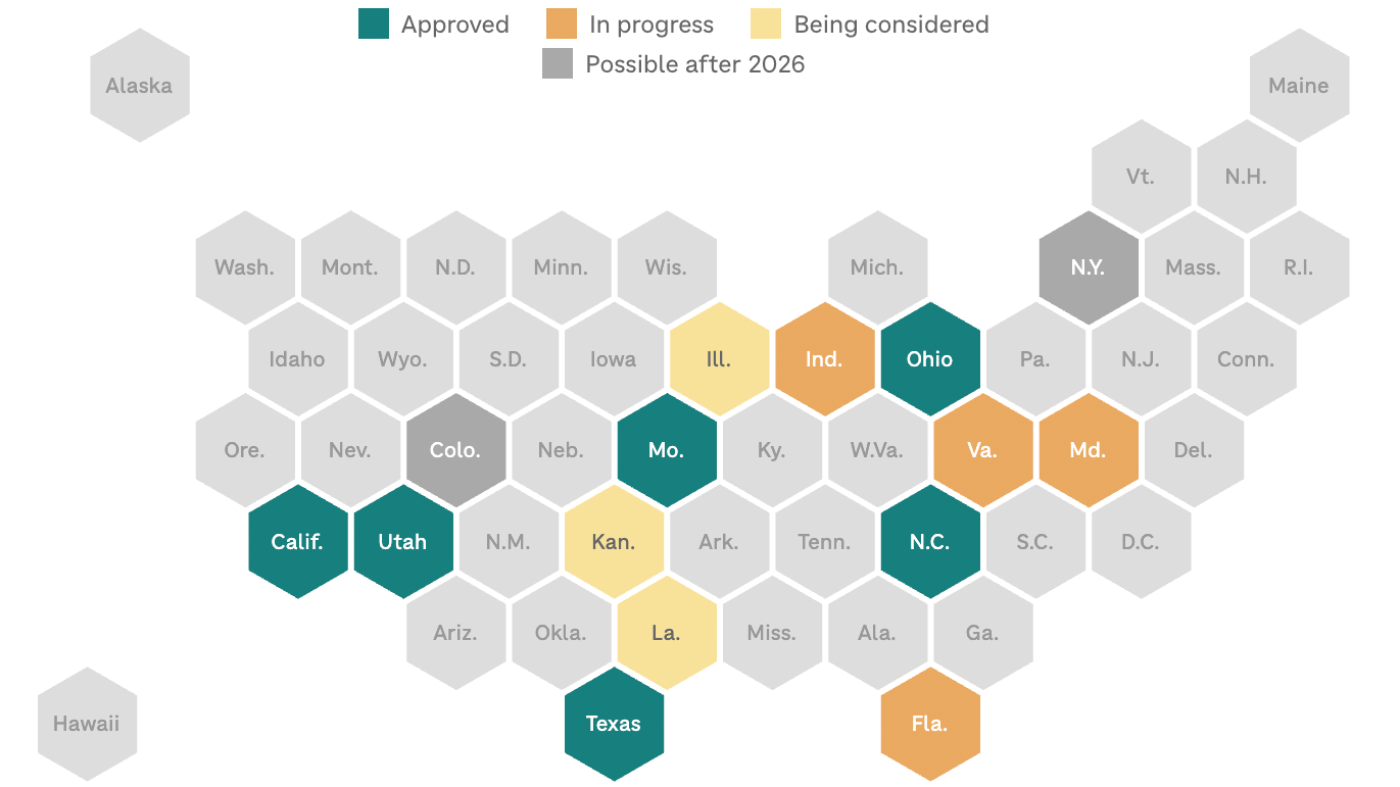In what some saw as a void of opportunity to weigh in on Rocky Mountain Power’s proposed rate increase, a group of the utility’s customers gathered for their own public “people’s hearing” on Saturday.
A row of five chairs reserved for utility executives and members of Utah’s Public Service Commission sat empty in the front row of a conference room at the Salt Lake City Public Library’s Marmalade Branch while electricity customers shared their personal testimony to a video camera.
“We’re going to send [the recording] to the Public Service Commission as a replacement for the hearing that they were not willing to have,” said Luis Miranda, a campaign organizer for the Sierra Club’s Utah chapter.
Utah’s Public Service Commission is currently considering Rocky Mountain Power’s request to raise its electricity rates for customers by 18% — down from a 30% increase the company initially requested last year. But pro-coal lawmakers and clean energy advocates alike say customers will end up paying the difference in the long run through Rocky Mountain Power parent company PacifiCorp’s Energy Balancing Account (EBA).
The hearing process has been mired in legislative and procedural drama. Legislators tried and failed this year to abolish the EBA for Utah customers. They have also repeatedly asked Rocky Mountain Power to separate from its parent company so that Utah customers did not pay for “poor regulatory decisions” in other states.
Saturday’s testimonies, however, were largely personal.
Jeffery White, a tiny homes architect and self-described senior citizen, said he hoped for “peace” in his retirement years.
Instead, “I find myself, like so many others, at the kitchen table doing math, trying to stretch a fixed income across food, medicine and power bills,” White said. “Rocky Mountain Power’s proposed hike isn’t just a number. It’s a sentence. It leaves people like me in cold homes staring at dark ceilings.”
The meeting, organized by a coalition of clean energy advocates, focused on Rocky Mountain Power’s renewed commitment to coal and natural gas after previously promising to amp up its clean energy portfolio.
“I feel a sense of betrayal as a homeowner,” said Paul Zuckerman, who said he moved to Utah in the 1970s and “fell in love with the clean air environment.”
Utah lawmakers last year passed two bills to keep the state’s two biggest coal plants alive and allow Rocky Mountain Power to pass the associated costs onto Utah customers.
(Shannon Sollitt | The Salt Lake Tribune) The names of Utah Public Service Commissioners and PacifiCorps executives, including Berkshire Hathaway chairman Warren Buffet, adorned empty chairs at a meeting Saturday afternoon about Rocky Mountain Power’s proposed rate hike. Berkshire Hathaway owns PacifiCorps, RMP’s parent company.
Shareholders at Berkshire Hathaway, which owns PacifiCorps and Rocky Mountain Power, will consider two proposals ahead of their May 3 shareholder meeting that ask the company to evaluate the financial impacts of its energy-saving initiatives. One proposal suggests the company’s “voluntary environmental activities” are “unnecessary” and do not benefit company shareholders, according to a proxy statement.
The other suggests Berkshire Hathaway’s fossil fuel investments are, in fact, harming the company and its shareholders due to increased insurance rates fueled by climate disasters.
Berkshire Hathaway’s board of directors has recommended voting “no” on both proposals. Organizers of Saturday’s meaning said the proposals would, at least, provide an “accounting of corporate climate change-related activities” and provide information that would benefit “shareholders and RMP ratepayers alike.”
But ratepayers are hit harder by Rocky Mountain Power’s policies, customers said.
“Don’t make the most vulnerable among us pay the price for someone else’s profit,” White said like he was addressing the Public Service Commissioners.
The utility’s customers who attended Saturday morning’s event said they were unwilling to pay more to burn coal and accelerate climate change.
“The people of Utah already pay a high enough price for climate change,” said Emma Verhamme, a Salt Lake City resident and RMP customer.
Verhamme listed, at length, the ways, she said, Salt Lake residents have “paid” for climate change: the dry Great Salt Lake, less snowfall in the winter months, more intense wildfire smoke in summer months, unhealthy air quality that keeps kids inside at recess some days.
“Personally, I don’t want any of that,” Verhemme said.
Some customers might, however, be willing to pay more to invest in renewable energy, said Ted Gurney.
“If they spend it on what we like, we’ll pay the rent,” Gurney proposed.
Shannon Sollitt is a Report for America corps member covering business accountability and sustainability for The Salt Lake Tribune. Your donation to match our RFA grant helps keep her writing stories like this one; please consider making a tax-deductible gift of any amount today by clicking here.


































